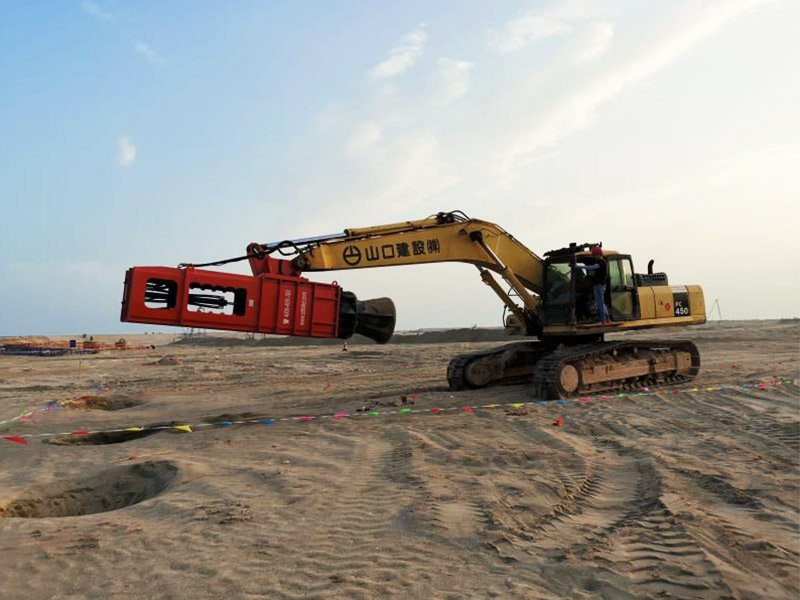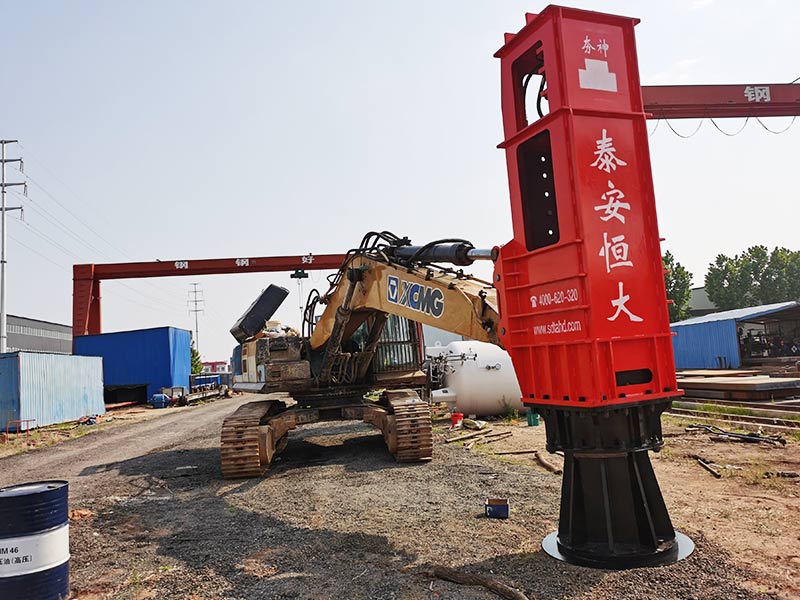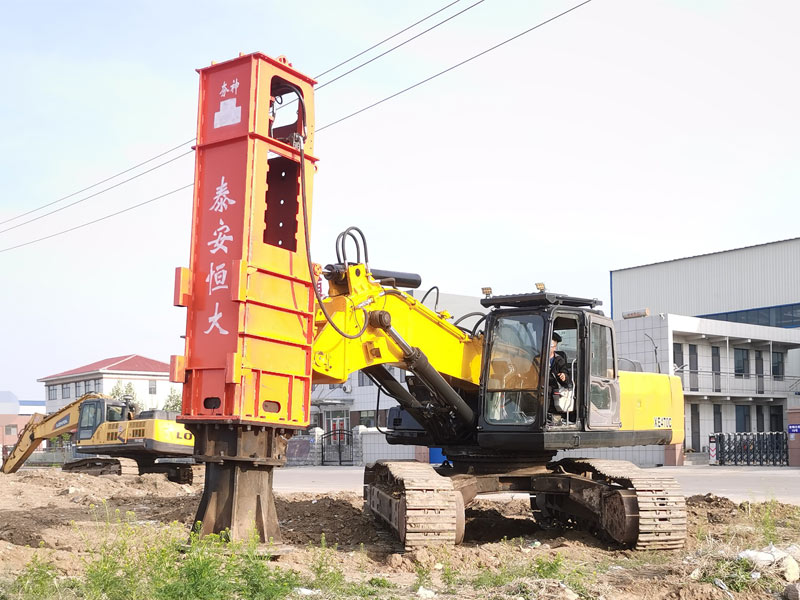Where do we use rapid impact compaction? - HENGDA RIC
- Update time:2023-02-14 14:59:30
- Views:324
Small Buildings and Floor Slabs – RIC has been used to improve soil under 2 to 3-story building footings and floor slabs.
Replace Surcharging – Instead of using a surcharge to consolidate the soil under a static weight, Rapid Impact Compaction consolidates it immediately.
Replace Over Excavation – Loose fills or soils can be consolidated immediately without the need to replace the soil.
Improve Lateral Load Capacity for Piles – The lateral load capacity of a pile is greatly influenced by the stiffness of the upper 10 feet of soil in which it is driven. By densifying the upper layers of soil the lateral capacity is greatly increased.

One advantage of RIC is that the drop height and number of blows can be varied based on the soil conditions. Through a test program, we will work with the Geotechnical Engineer of Record (GER) to determine the appropriate improvement criteria and RIC set-up for various areas of the site. For a site with a mixed soil profile and varying thicknesses of sand and clay, the ability to accurately control the amount of energy delivered to the ground is critical as it allows one to improve the loose overlying loose soil without liquefying the fine grained soils below – providing more uniform compaction.

Use of RIC will result in an increase in soil density, stiffness, and angle of internal friction as measured by an increase in SPT N-value, CPT tip resistance or other means of insitu test. The recommended approach is to determine what level of improvement is desired and discuss that required improvement with your technical representative for feasibility. For example, a 2-story commercial light industrial structure is to be constructed on a site underlain by up to 10 ft of existing sandy fill soils. SPT N-values range between 4 and 8 blows per foot (bpf) in the fill. The geotechnical engineer’s correlation between SPT N-Value and soil stiffness for footing settlement analyses indicates that an average N-value in the fill needs be 10 bpf. The geotechnical engineer would perform settlement analyses using the foundation sizes and loading provided by the structural engineer to confirm that the footings will perform acceptably if the fills are improved to 10 bpf. A review of the borings logs indicates that this level of improvement is achievable with RIC. The geotechnical engineer would then complete his or her report with a recommendation that RIC be used to compact the fills in place and that an N-value of 10 bpf will be required.

Rapid Impact Compaction (RIC) is a ground improvement technique that densifies shallow, loose and, granular soils. Soil treated by this method results in increased density, friction angle, and overall stiffness, which results in increased bearing capacity and decreased settlement of planned structures. Rapid Impact Compaction consists of an excavator-mounted, hydraulic pile-driving hammer repeatedly striking a circular plate that rests on the ground. Energy is then transferred to the ground safely and efficiently, as the RIC’s foot remains in contact with the ground, which avoids concern over flying debris being ejected. Rapid Impact Compaction densifies loose-fill soils of up to 6 m deep or more. Additional benefits of rapid compaction include: an increase of the bearing capacity of the soils, minimization of settlement, and the creation of uniform support for foundation footing. Rapid Impact Compaction is an innovative solution when compared to the time and cost of over-excavation and re-compaction.
- 2022-08-13Rapid impact compaction (RIC) - China manufacturer
- 2023-01-28Do you wet crushed rock before compacting? - HENGDA RIC
- 2023-02-14What is an alternative to a compactor? - HENGDA RIC
- 2023-01-29Can soil compaction exceed 100? - HENGDA RIC
- 2022-11-02Does rapid impact compactors treat subgrade? What are the hazards of subgrade settlement?
- 2022-08-27What is a rapid impact compaction? What is the construction method of rapid impact compactor?
- 2023-02-09Should you wet dirt when compacting? - HENGDA RIC
- 2023-01-19Rapid impact compaction UK - HENGDA RIC
- 2023-01-29What are the shallow compaction techniques?
- 2023-02-14How much water required for soil compaction? - HENGDA RIC
- 2022-09-28Rapid impact compaction under construction at Dubai Airport in UAE
- 2022-08-15HC36 Rapid Impact Compaction Equipment in Jiangxi Highway Construction in China
- 2022-08-15What is rapid impact compaction method? - Rapid impact compaction manufacturer
- 2022-08-15Rapid impact compactor under construction at Xiamen Airport in China
- 2022-08-15Rapid impact compaction (ric) method commonly used for
- 2022-08-15What is Rapid Hydraulic Compactor? - Rapid Hydraulic Compactor China Supplier
- 2022-08-15Rapid impact compaction in China's Guangdong high-speed construction
- 2022-08-15Rapid impact compactor at the construction site of Jazan Airport in Saudi Arabia
-
Rapid Impact Compaction equipment manufacturer-Rapid Impact Compaction debugging equipment
Rapid impact compactors have two compaction forms in practic...
-
Construction Technology of HC36 Rapid Impact Compaction in Gansu, China
Construction points of rapid impact compaction machine in Ga...
-
Rapid Impact Compaction Operation Video Daquan-Rapid Impact Compactor Operation Video Tutorial
Rapid impact compaction has remarkable effect in foundation ...
- Hengda Machinery Co., Ltd
How much is the price of rapid impact compaction, model parameters, etc.


